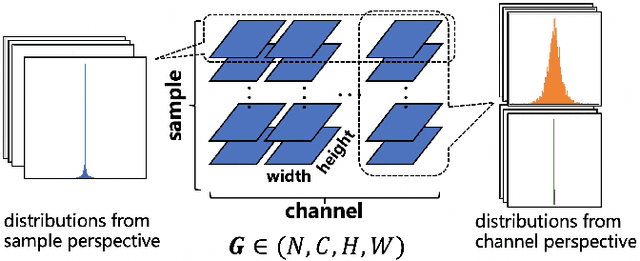Yinghan Li
Static Batching of Irregular Workloads on GPUs: Framework and Application to Efficient MoE Model Inference
Jan 27, 2025
Abstract:It has long been a problem to arrange and execute irregular workloads on massively parallel devices. We propose a general framework for statically batching irregular workloads into a single kernel with a runtime task mapping mechanism on GPUs. We further apply this framework to Mixture-of-Experts (MoE) model inference and implement an optimized and efficient CUDA kernel. Our MoE kernel achieves up to 91% of the peak Tensor Core throughput on NVIDIA H800 GPU and 95% on NVIDIA H20 GPU.
Localization in Multipath Environments via Active Sensing with Reconfigurable Intelligent Surfaces
Jun 27, 2024Abstract:This paper investigates an uplink pilot-based wireless indoor localization problem in a multipath environment for a single-input single-output (SISO) narrowband communication system aided by reconfigurable intelligent surface (RIS). The indoor localization problem is challenging because the uplink channel consists of multiple overlapping propagation paths with varying amplitudes and phases, which are not easy to differentiate. This paper proposes the use of RIS capable of adaptively changing its reflection pattern to sense such a multiplepath environment. Toward this end, we train a long-short-termmemory (LSTM) based controller to perform adaptive sequential reconfigurations of the RIS over multiple stages and propose to group multiple pilots as input in each stage. Information from the multiple paths is captured by training the LSTM to generate multiple RIS configurations to align to the different paths within each stage. Experimental results show that the proposed approach is effective in significantly reducing training complexity while maintaining localization performance at fixed number of pilots.
Distribution Adaptive INT8 Quantization for Training CNNs
Feb 09, 2021



Abstract:Researches have demonstrated that low bit-width (e.g., INT8) quantization can be employed to accelerate the inference process. It makes the gradient quantization very promising since the backward propagation requires approximately twice more computation than forward one. Due to the variability and uncertainty of gradient distribution, a lot of methods have been proposed to attain training stability. However, most of them ignore the channel-wise gradient distributions and the impact of gradients with different magnitudes, resulting in the degradation of final accuracy. In this paper, we propose a novel INT8 quantization training framework for convolutional neural network to address the above issues. Specifically, we adopt Gradient Vectorized Quantization to quantize the gradient, based on the observation that layer-wise gradients contain multiple distributions along the channel dimension. Then, Magnitude-aware Clipping Strategy is introduced by taking the magnitudes of gradients into consideration when minimizing the quantization error, and we present a theoretical derivation to solve the quantization parameters of different distributions. Experimental results on broad range of computer vision tasks, such as image classification, object detection and video classification, demonstrate that the proposed Distribution Adaptive INT8 Quantization training method has achieved almost lossless training accuracy for different backbones, including ResNet, MobileNetV2, InceptionV3, VGG and AlexNet, which is superior to the state-of-the-art techniques. Moreover, we further implement the INT8 kernel that can accelerate the training iteration more than 200% under the latest Turing architecture, i.e., our method excels on both training accuracy and speed.
 Add to Chrome
Add to Chrome Add to Firefox
Add to Firefox Add to Edge
Add to Edge